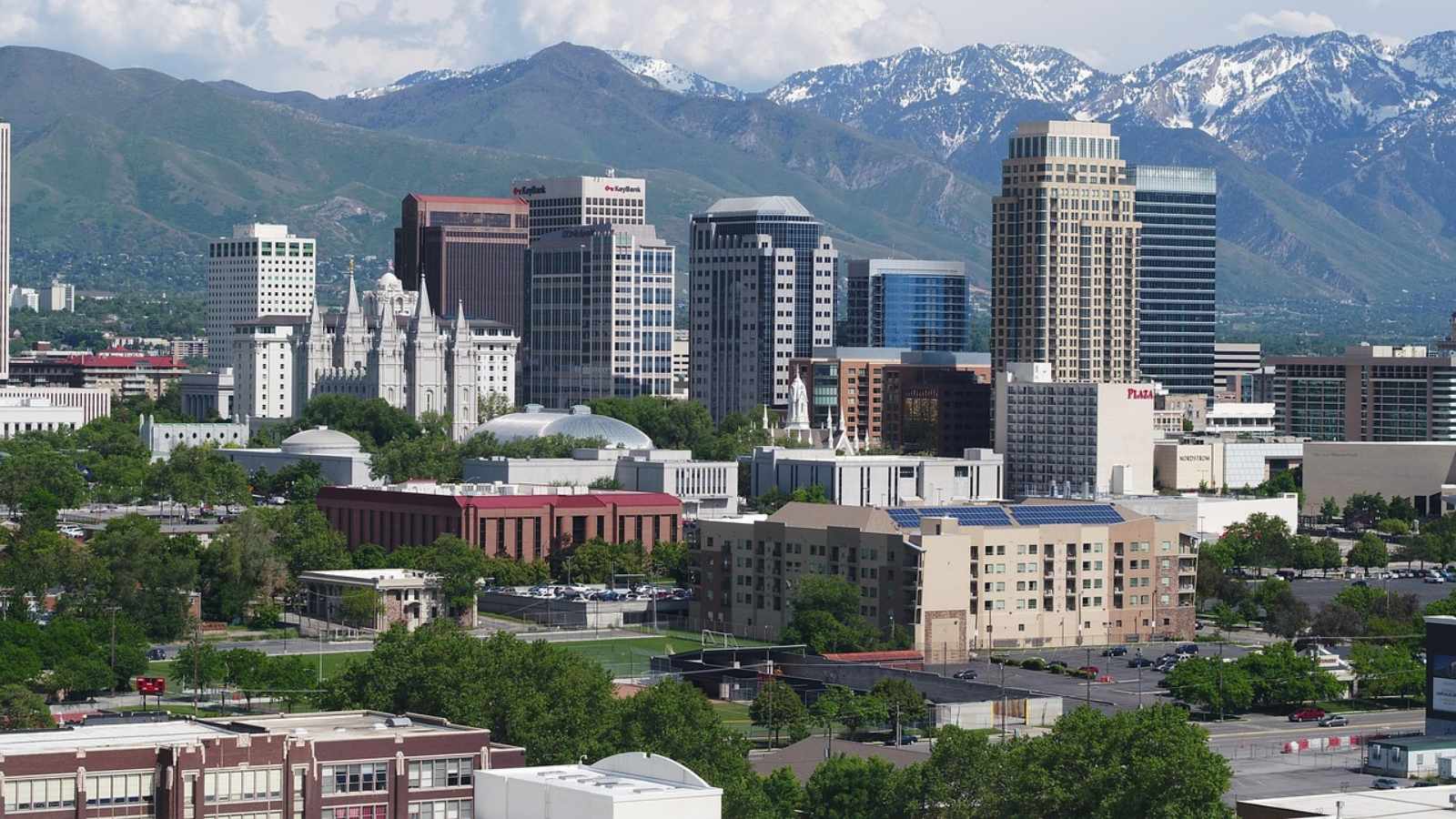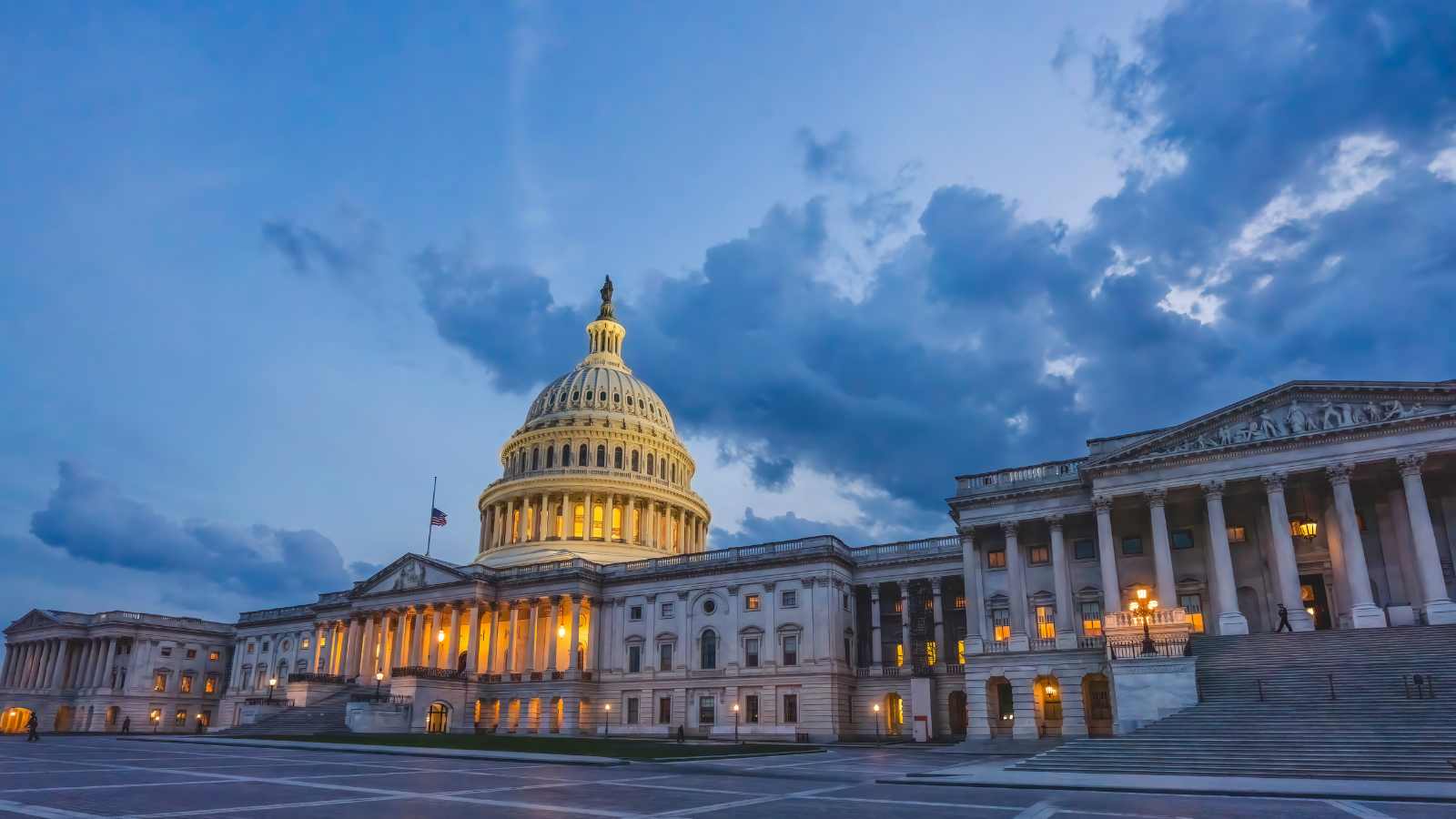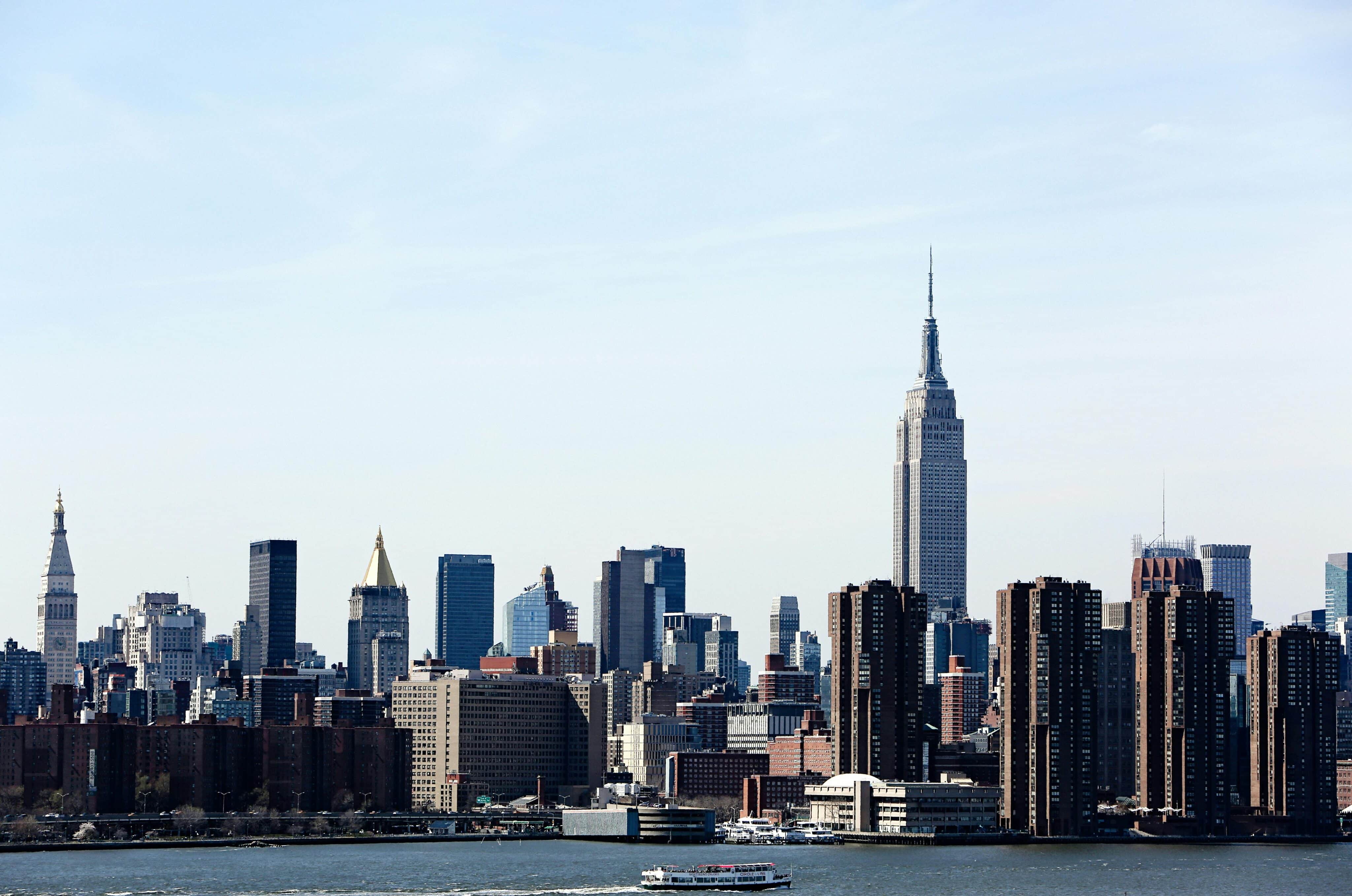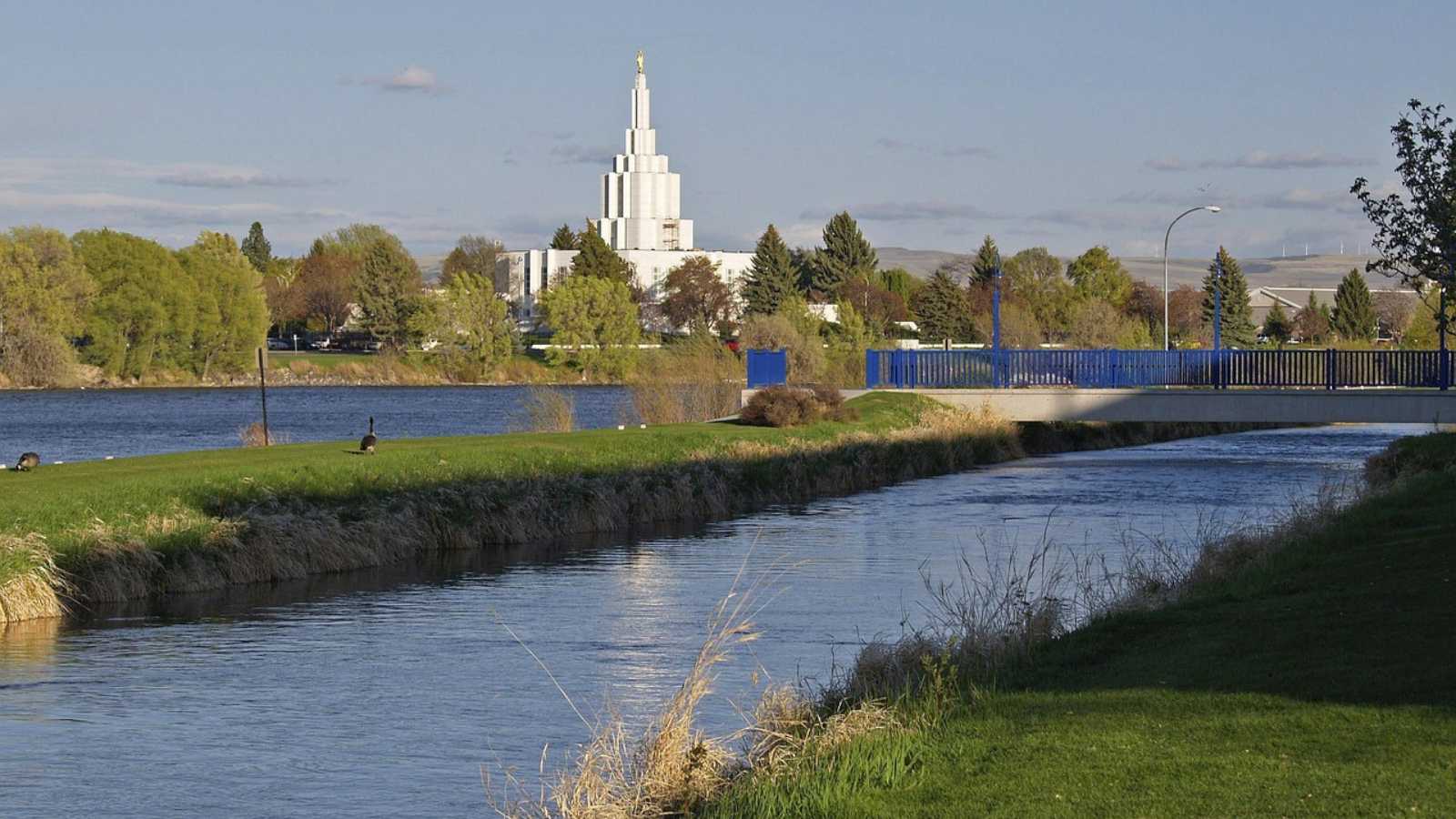While recession worries persist, a select group of U.S. states consistently outperform others by relying on a combination of diverse economies, low unemployment, firm fiscal reserves, and robust operational frameworks. The most critical factor behind their resilience is proactive, forward-thinking economic strategies.
These states not only endure downturns; they excel because their unified approach, blending risk management, prudent investments, and policy discipline, creates a durable economic advantage. J.P. Morgan recently cut recession odds from 60% to below 50%, thanks to eased trade tensions. Meanwhile, global economic uncertainty fuels market anxiety.
States at the top of the economic rankings are not just avoiding disaster; they are thriving, especially when compared to peers that remain vulnerable to trade policy uncertainty. Trade policy uncertainty has hit record highs nationally. The last two major recessions were in 2008 and during the COVID-19 pandemic.
Today, low EPU (Economic Policy Uncertainty) Index levels during slowdowns do not seem relevant. Businesses in stronger states are still securing or renewing last year’s budgets and are not laying off workers, unlike those in less prepared economies. Many top-performing states have built firmer economic cushions, providing additional protection that certain other states lack.
Here is a detailed analysis of the 10 most powerful state economies in America.
North Dakota: The Prairie Powerhouse That Defies Recessions

North Dakota is not just riding out economic downturns; it’s almost impervious to them. With a $55,600 surplus per capita in tax income and the second-lowest unemployment rate in the nation at just 2.5%, the state of the Peace Garden has converted its oil wealth into economic resilience.
The state’s enormous Legacy Fund, modeled after Norway’s sovereign wealth fund, has grown from zero to over $10.7 billion since 2010 and is projected to reach anywhere from $240 billion to $450 billion by 2060. The state’s oil stronghold, but visionary leadership did not stop there. North Dakota’s Bakken formation already produces over 1.2 million barrels of oil per day, the third-highest oil-producing state after Texas and New Mexico.
North Dakota holds 10.3% of America’s crude oil reserves and is home to the largest known lignite coal deposit in the world. This energy dominance generates huge revenues: 30% of all oil and gas taxes flow directly into the Legacy Fund, an endless source of revenue. Clever budget management has made North Dakota the most recession-resistant state, boasting an AAA credit rating and sufficient cash reserves to cover expenses without borrowing for months.
Even as oil prices plummeted precipitously in recent years, North Dakota’s diverse economy, comprising agriculture, manufacturing, and technology, maintained unemployment rates under 3%, while other energy-based states struggled.
Florida: The Economic Miracle of the Sunshine State

For the third consecutive year, Florida tops CNBC’s list as the most recession-proof economy in America. With no state income tax, exploding population growth, and a rate of business creation equal to the best in the nation, Florida has cracked the code of long-term economic dominance.
The state’s economic engine has expanded to nearly $1.5 trillion in total GDP, making it one of the largest economies in the world if the state were a separate country. The state’s strong point is diversity, which leads to robust tourism, aerospace, agriculture, and a burgeoning tech sector in Tampa and Miami, generating diversified revenue streams to cushion economic shocks.
Florida received a record 142.9 million visitors in 2024, the third consecutive year of increased tourism activity, with the industry supporting 2.1 million jobs. The aerospace sector comprises over 700 aerospace firms and 2,000 aviation firms, along with five active spaceports, including the Kennedy Space Center.
Powerhouses such as SpaceX, Blue Origin, Boeing, and Lockheed Martin have a presence in the state, contributing $5.9 billion to the economy and generating over 151,000 aerospace-related jobs. Florida’s debt remains in check, and with 3.5% economic growth projected for 2024, expected to slow to a still-strong 3.0% by 2030, the state demonstrates that business-friendly and fiscally conservative policies generate lasting economic growth.
Even hurricane threats have not slowed Florida, and it has earned a reputation for economic toughness.
Texas: The Economic Colossus That Defies Gravity

Texas continues to demonstrate significant resilience in the face of the recession. With a $2.7 trillion GDP and recognition as the second-most recession-proof economy according to CNBC, the state has developed a broad economic base. For 13 consecutive years, Texas has received the Governor’s Cup for leading in business location and expansion projects, with 1,368 capital investment initiatives in 2024, more than double the runner-up.
Texas combines gargantuan size with remarkable responsiveness, hosting a unique range of industries from petroleum refineries to computer tycoons and space centers. The state’s unemployment level is 4.0%, which is relatively easy to manage, and its pro-business nature attracts businesses fleeing high-tax states like moths to a flame.
Real GDP in Texas grew 3.2% in the fourth quarter of 2024, outpacing the nation’s 2.4% growth. The state added 198,300 nonfarm jobs from June 2024 to June 2025, the largest of any state and growing at a higher rate than the nation as a whole each year. With no state income tax, 54 Fortune 500 headquarters, and a business-friendly regulatory climate that fosters rather than discourages business expansion, Texas has created a self-perpetuating economic growth machine.
Texas produces more than 9% of the U.S. GDP and accounts for 22% of all U.S. exports, remaining the world’s leading exporting state for 23 consecutive years. Instead of being damaged by trade wars and uncertainty with China, the majority of Texas-based producers report that trade policies have not affected their sales (44%). The state continues to have a diversified economy with strong workers.
Utah: The Economic Honey of the Beehive State

Utah has established a model for economic vitality, pairing strong business growth with low unemployment and strict budget discipline. Ranked second in multiple surveys of economic dynamism, Utah reports the highest percentage of high-tech jobs and substantial cost-adjusted median household income, ranking second nationwide. In 2024, the unemployment rate stood at 3.1%, significantly lower than the national average of 4.0%.
Utah’s unemployment rate is just 3.2%. The state holds AAA credit ratings from the three major credit rating agencies, a distinction held by only 14 states nationwide. Utah’s nominal GDP surpassed $300 billion for the first time in state history. Its real GDP rose 4.6% during the first three quarters of 2024, the top growth rate in the nation. The tech sector in Utah employs over 126,000 people. It is projected that tech job growth will be 33% from 2024 to 2034, making it the number one sector for that period.
Tech’s anticipated economic impact is $22.5 billion, or 10% of the total state economy. Utah may have found a way to draw companies without relying on unsustainable tax credits. It has established a model of sustainable growth, which in 2023 resulted in the creation of 7,800 new jobs and over $1 billion in wages, primarily from fintech companies. Utah’s business tax rates are among the lowest as a share of GDP. It also offers one of the top three environments to start a business, according to WalletHub.
Massachusetts: East Coast Innovation Fortress

Don’t let the high cost of living fool you; Massachusetts has built an economic fortress of innovation that makes it virtually recession-proof. The Bay State leads the country in the concentration of high-tech employment.
It contains the most significant percentage of STEM workers, establishing a knowledge base that persists even as outdated sectors decline. Massachusetts was recently named the top state economy in the country by WalletHub, due to its possession of the highest percentage of employment in high-tech fields and the highest percentage of firms listed on the Technology Fast 500.
Massachusetts invests significantly in industrial and academic research and development, which results in the second-highest per capita rate of invention patents and the third-highest proportion of STEM professionals in the nation. The state graduates over 120,000 higher education students annually, of which 21,775 are STEM graduates, and approximately 75% of these graduates stay in the Commonwealth to work.
With 122 institutions of higher education, Massachusetts produces the highest rate of STEM degrees per million residents and has the highest percentage of adults (47.3%) with bachelor’s degrees or higher. The life sciences sector alone employs over 113,000 workers in biopharma and biotech R&D roles, with job growth of 11.6% from 2021 to 2023, nearly twice the 6.3% national increase rate. Massachusetts is home to 19 of the world’s top 20 biopharma companies and more than 1,000 biotech companies.
This innovation infrastructure has built an economic ecosystem so specialized and precious that firms pay a premium to tap into its talent pool. With first-class universities graduating a talent pipeline of highly educated workers and steadfast firms like Biogen, Moderna, and Takeda as anchors to the economy, Massachusetts has an Aa1 stable credit rating underpinned by record reserve levels of $8.5 billion.
Washington: The Tech Titan of the Pacific Northwest

Washington state has become America’s most dynamic economic hybrid, integrating traditional sectors like aerospace and agriculture with high-tech expertise that generates wealth at a breakneck speed. With Amazon, Microsoft, and a robust startup scene, Washington is one of the top three state economies, leveraging its position as a global technology hub to build unprecedented economic power.
The state’s unemployment rate of 4.5% remains stable, despite economic challenges, and remains high due to the emphasis on training STEM professionals and recruiting industry-funded R&D. In Washington, aerospace is a strong sector due to Boeing’s significant presence and investment, which can account for as much as $400 billion annually to the economy. As the technology industry offers above-average wages and a desirable lifestyle, it can attract top global talent.
The state’s port facilities handle unbelievable volumes of international trade, processing hundreds of billions of imports and exports annually. While trade wars will always create some tariff risk, Washington’s economic diversity and high-value manufacturing provide a solid buffer against trade disruptions, thanks to its merchant and service fees.
Washington’s natural resource advantages, from its forests to its hydroelectric power, drive energy costs, making it an attractive low-cost option for data centers and manufacturing. Washington is considered the gateway to the Pacific Rim economy, providing easy access to markets in Asia.
Delaware: Financial Fortress of First State

Small but mighty, Delaware has used its pro-business legal tradition to become America’s corporate capital. With 68% of Fortune 500 companies calling it home and a financial services sector that generates disproportionate economic value, the First State is a lot stronger than its size would imply.
The state’s Court of Chancery, the nation’s premier business court, provides legal certainty and is the jurisdiction of first choice for high-stakes corporate deals and the resolution of disputes. Delaware boasts a AAA credit rating and healthy fiscal cushions. In the meantime, its Northeast corridor location provides access to giant markets without the suffocating tax burdens of nearby states. The state unemployment rate stands at 4.0%, a robust economy fueled by professional services, chemicals, and agriculture.
Delaware’s incorporation business alone generates hundreds of millions of dollars in annual revenue. At the same time, the pro-business legal structure, combined with incorporation fees and other professional services, provides a steady flow of revenue that will not be affected by a recession.
Meanwhile, the state has attracted the financial services industry from other states, encouraging many credit companies and banks to locate in Delaware due to its competitive regulatory climate and forward-looking body of commercial law. Although its population is small, Delaware’s per capita income has consistently ranked among the highest in the nation, due primarily to the presence of many of the largest corporations in America.
New York: The Surprising Resilience of the Empire State

Despite high taxation and regulatory complexity, New York has built an economic engine so robust that it remains one of the most recession-resistant states on an annual basis. With a GDP of $2.3 trillion and unprecedented concentrations of finance, media, and technology companies, New York generates wealth on a scale greater than many countries.
The state’s financial industry alone manages trillions of dollars in assets, and its media and entertainment sectors produce global content consumed worldwide. Despite economic pressures, New York’s unemployment rate of 4.5% remains steady.
Its competitiveness is boosted by a nearly 15% concentration of STEM professionals and notably high industry investment in research and development. Washington’s aerospace sector, anchored by Boeing, contributes billions to the economy. At the same time, New York’s tech industry continues to thrive, creating high-paying jobs. Tech jobs draw talented US workers and skilled immigrants from around the world. The state’s port facilities enjoy a vast international trading enterprise annually, with hundreds of billions of dollars of imports and exports processed through its waterways and facilities.
Tariff risks from trade wars are a challenge; however, the state’s diversified economy and high-value manufacturing are a powerful antidote to adverse export conditions. The state boasts abundant land, forests, and hydroelectric power that enable it to take advantage of competitive power rates for data centers and manufacturing. Washington’s location on the Pacific Rim provides unobstructed access to Asian markets and serves as a strategic gateway to the United States’ Pacific Rim.
Nebraska: The Cornhusker State’s Quiet Strength

Nebraska represents the humble confidence of America’s heartland, diversified into a twenty-first-century economic giant. The Cornhusker State blends agricultural reliability with emerging finance and technology industries to produce multiple economic bases. Its geography, situated in the middle of the country, has positioned Nebraska as a center for logistics and transportation, with railroad lines and highways connecting the East and West coasts.
With a mere 3.0% unemployment and a cost of living that stretches the dollar, Nebraska offers a quality of life that attracts families and companies. Its farm sector grows billions of dollars’ worth of crops and livestock, with food processing companies adding value and producing manufacturing employment.
Hubs such as Berkshire Hathaway’s Omaha headquarters hint at the advanced financial services sector complementing traditional farming. The state’s fiscal condition is good, with modest debt and consistent budget surpluses. Nebraska has a diversified economy and very reasonable policies that create above-average stability and growth without exhibiting the flashiness of other, more ostentatious competitors.
The state’s public universities produce a steady stream of bachelor’s, master’s, and doctoral-level graduates who enter the workforce, which is increasingly preferring to remain in-state. Business-friendly policies and economic conditions make Nebraska a viable potential operating location.
Idaho: The Gem State’s Hidden Economic Treasure

Idaho has built one of America’s most recession-proof economies behind the scenes, combining old-fashioned farming and manufacturing with explosive high-tech growth that has earned it the nickname “Silicon Slopes North.” It is seventh nationally in economic vitality, boasting an unemployment rate of just 3.6% and business growth rates that make national headlines. Idaho is the destination of choice for companies in California and Washington, which are seeking lower costs and fewer regulations.
The state’s low cost of living attracts businesses and workers fleeing expensive coastal markets, while its business-friendly regulatory environment fuels growth and innovation. The technology sector has seen tremendous growth, with firms such as Albertsons and Simplot, along with numerous startups, choosing Idaho for operations. Its agricultural industry produces potatoes, wheat, and milk for national and international markets.
Idaho’s convergence of natural resources, a growing tech sector, and strategic geography creates an economic sweet spot, generating growth without the volatility and boom-bust cycles that plague other economies. The population has increased strongly due to in-migration from higher-cost states, but housing and living costs remain comparatively low. Idaho’s fiscal management has earned strong credit ratings, and its legislature maintains a pro-business stance that welcomes investment and employment expansion.
Key Takeaways

These ten states demonstrate that lasting economic resilience depends on a clear strategy: diversifying industries, practicing fiscal discipline, and creating a business climate that attracts and retains talent and investment. North Dakota, Florida, Utah, and others stand out not by chance, but by design.
Their policies serve as a blueprint for navigating downturns and thriving in uncertain times, demonstrating that targeted, long-term planning makes the difference between economic vulnerability and resilience. Whether considering where to build a career, relocate a business, or invest, these ten states demonstrate the ability to manage economic uncertainty effectively.
As J.P. Morgan economists noted when lowering recession probabilities, states with solid fundamentals, diversified economies, and prudent fiscal management tend to outperform others in both prosperous and challenging times. In a shifting environment, consistent strength lies in states prepared to succeed regardless of changing circumstances.
Disclaimer – This list is solely the author’s opinion based on research and publicly available information. It is not intended to be professional advice.
16 Grocery Staples to Stock Up On Before Prices Spike Again

16 Grocery Staples to Stock Up On Before Prices Spike Again
I was in the grocery store the other day, and it hit me—I’m buying the exact same things I always do, but my bill just keeps getting higher. Like, I swear I just blinked, and suddenly eggs are a luxury item. What’s going on?
Inflation, supply-chain delays, and erratic weather conditions have modestly (or, let’s face it, dramatically) pushed the prices of staples ever higher. The USDA reports that food prices climbed an additional 2.9% year over year in May 2025—and that’s after the inflation storm of 2022–2023.
So, if you’ve got room in a pantry, freezer, or even a couple of extra shelves, now might be a good moment to stock up on these staple groceries—before the prices rise later.
6 Gas Station Chains With Food So Good It’s Worth Driving Out Of Your Way For

6 Gas Station Chains With Food So Good It’s Worth Driving Out Of Your Way For
We scoured the Internet to see what people had to say about gas station food. If you think the only things available are wrinkled hot dogs of indeterminate age and day-glow slushies, we’ve got great, tasty news for you. Whether it ends up being part of a regular routine or your only resource on a long car trip, we have the food info you need.
Let’s look at 6 gas stations that folks can’t get enough of and see what they have for you to eat.




